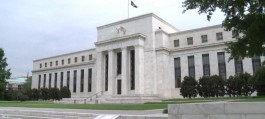In 1999, Steve Jobs returned to lead Apple, Intel was the dominant semiconductor company, and a startup chipmaker called Nvidia had just debuted on the Nasdaq stock market.
It took Nvidia just three years to join the S&P 500, replacing the scandal-hit oil giant Enron.
But even then, no one expected Nvidia shares to become the best performer in the past 25 years, gaining a total of 591,000% since its initial public offering, including reinvested dividends, according to a report by Bloomberg.
It's a hard-to-grasp ratio, and it's partly a testament to the financial frenzy surrounding artificial intelligence and how investors have come to see Nvidia, which makes the advanced chips that power the technology, as the undisputed winner of this tech boom, the report said.
On Tuesday, Nvidia capped its meteoric rise by overtaking Microsoft to become the world’s most valuable company, with a market cap of $3.34 trillion at the close of Wall Street trading. This year alone, the company has added more than $2 trillion to its value.
The company's rise was by no means guaranteed, and it is not certain whether it will be able to stay at the top of the S&P 500.
Longtime Nvidia investors have had to endure three annual stock price crashes of 50 percent or more. On the other hand, maintaining the current momentum requires customers to continue spending billions of dollars each quarter on AI hardware, which has so far yielded relatively small returns.
However, what ultimately paved the way for Nvidia's rise to the top was the company's big bet on graphics chips, and co-founder and CEO Jensen Huang's vision that the industry would shift to what he calls accelerated computing, an area where Nvidia chips have a significant competitive advantage.
“You have to give the management team a lot of credit,” says Brian Mulberry, portfolio manager at Zacks Investments. “They’ve been making the most of every wave of hardware innovation.”
Between the company's IPO and its entry into the S&P 500, the stock surged more than 1,600 percent, giving the company a market value of about $8 billion. This surge came at a time when the stocks of many other technology companies were collapsing in the wake of the dot-com bubble that peaked in March 2000.
The key to Nvidia's early success
One of the keys to Nvidia's massive success has been its technology being incorporated into video game consoles like Microsoft's Xbox and Sony's PlayStation, where Nvidia's GeForce graphics processing units, or GPUs, have become gamers' go-to devices because they consistently deliver more realistic experiences.
“Jensen Huang was always a great talker, he told good stories, and it was clear that GPUs were becoming more important,” says Rhys Williams, chief strategist at Wi-Fi Capital Management, who was a buyer at the IPO. “Each subsequent generation of hardware offered much better performance, much more realistic graphics, and then PC gaming came along.”
Years of challenges for NVIDIA
The next six years for Nvidia were not the best of times. The stock collapsed in 2008 due to the financial crisis that led to weak demand, and its old competitor Advanced Micro, which had been struggling for a long time, began to recover its activity.
Meanwhile, the relationship between Nvidia and Intel, which allowed the two companies to use each other's capabilities, soured, forcing Nvidia out of one of its biggest markets. The two companies settled in 2011, with Intel agreeing to pay Nvidia $1.5 billion.
Nvidia entered a new and lucrative market in 2012 by launching graphics chips for servers inside data centers. These chips were designed to speed up complex computing operations like oil and gas exploration and weather forecasting. While the chips weren’t an immediate hit, they gave Nvidia a foothold in a promising field.
But it took nearly nine years for Nvidia stock to surpass its 2007 high. This illustrates that success in the technology market sometimes requires patience and a long-term vision. It took time for customers to realize the full value of Nvidia's new technology.
Nvidia shares soared again in 2015. During that time, the company's chips became the foundation for emerging technologies, from advanced graphics interfaces to self-driving vehicles to a new wave of artificial intelligence products.
It was during this period that Banrion Capital Management CEO Shana Cecil first really drew attention to the company. She described a 2017 conference where Nvidia looked more like a beauty pageant winner than an investment opportunity.
“Almost every speaker emphasized that Nvidia was the most important company,” Cecile says. “At that point, the company really came onto my radar screen.”
Even as demand from crypto miners has waned, data center sales have continued to grow. The COVID-19 pandemic has boosted this business, as companies need to buy additional computing power to support remote work.
NVIDIA's data center revenue also grew eightfold from fiscal 2017 to fiscal 2021.
Nvidia shares have fallen in 2022 along with the rest of the tech sector, which has been hit by rising interest rates and slumping demand after the Covid-era boom.
Artificial Intelligence Opportunity
OpenAI's launch of ChatGPT in late 2022 was an immediate success, but it took some time for investors to realize how Nvidia could benefit from it.
Ultimately, interest in ChatGPT and other generative AI products exploded, leading to a crazy increase in orders for Nvidia chips.
Huge leap
- When Nvidia reported its first-quarter 2023 earnings, the size of the jump in its business shocked almost everyone on Wall Street.
- Nvidia provided a quarterly sales forecast that was more than 50 percent above the average forecast.
- NVIDIA's data center sales surpassed gaming revenue for the first time in fiscal 2023.
- Analysts expect Nvidia's data center sales to top $100 billion in the current fiscal year.
“They have a very strong position in the industry,” said Williams, chief strategist at Wavy Capital Management. “Obviously they won’t be able to control 95 percent of the market share forever, but it will be almost impossible for anyone to replace them.”






































